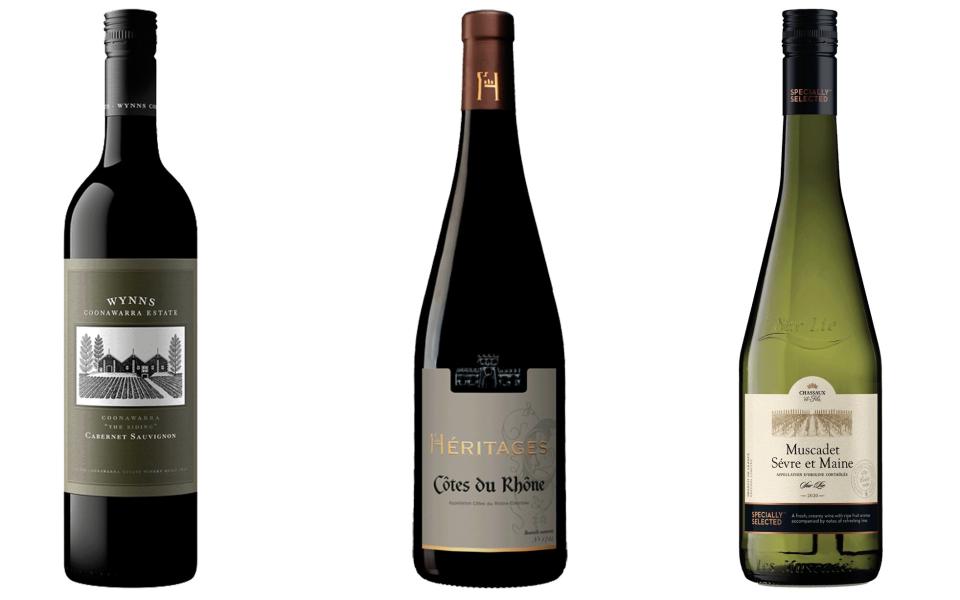Why you need to be talking about the ‘shape’ of your wine

Ian Hongell is a Barossa winemaker with a laid-back manner and an idiosyncratic way of describing wines. ‘The outside to me is beautifully spherical,’ he says as we chat over a tasting glass in a London bar. ‘Like a Clinker. You have those? Chocolate sweets that are shaped like a soft-ended football. Very flowy.’
The wine in question is Torbreck RunRig, an extraordinary shiraz made from six vineyards that were planted between 1858 and 1910. Maybe the collectors who vie to get a bottle of the AUS$300 (£170) wine – sold on allocation – in their cellars would be surprised to hear an iconic wine described this way by the man who makes it.
Tasting in shapes comes naturally to Hongell. He also has synaesthesia and tastes, dynamically, in colour – so ‘rieslings are white, blue, green, yellow orange and then fades into brown sort of a thing’ – which is not the sort of tasting note he usually shares, unless he is ‘a bit jet-lagged’ and forgets himself. But shapes, he feels, are different, ‘I think actually everybody tastes in shape but they just don’t realise.’
He is right. What else is it when people talk about a wine that is ‘too thin’? And what about the tasting descriptor ‘smooth’? I read a book in which an eminent critic ridiculed those who used the word, as if it were impossible to comprehend, yet surveys of ‘normal’ wine drinkers repeatedly find that not only do they seem to understand it, smooth is a quality they actively seek out.
It can be very instructive to talk about the texture of a wine. Does it feel silky? Spiky? Thick? Grainy? Crenellated? (Yes, that is a word I use in my own tasting notes, usually about sangiovese).
Hongell is interesting on how the texture of the tannins in a wine helps him to identify which vineyard sites they might have come from. He compares the ‘angularity of the graphite tannins which is what the signature of Eden Valley [in Australia] shows’ to the ‘big, chalky Barossa tannins that are larger and softer…and when we have limestone [soils] the tannins are quite creamy.’ You begin to sense the wines in your mouth as he speaks.
Then there’s the shape. I, too, sometimes doodle shapes in my tasting notes, or at least describe a shape in words, because the way the flavour of a wine changes in your mouth is a large part of the drinking experience. A common professional criticism of a wine is to say that it is ‘hollow.’ This means the wine makes an initial impact which then fades out before returning on the finish.
‘Restaurant wine,’ by the way, is a term sometimes used for a wine that makes an initial good impression but rapidly fades out and doesn’t return, encouraging you to take another sip for another hit, then another, then another and – oh my goodness do we already need to order another bottle? This is a shape you could represent like an electrocardiogram trace as a series of spikes linked by a flat line.
A word I often use for Rhône grenache is ‘pom-pom’ or ‘dandelion clock’, because of the way the wine feels to fill your mouth, rounded but with a lot of pinprick taste sensations. I’ve some way to go before I get as elaborate as Hongell who describes another of his wines thus: ‘If you had a spoon in a tub of semi-soft ice cream and started pushing out lightly and then a bit heavier and just at the end it started to flow up the sides…’
But as he says, ‘When I give tutored tastings, it seems to be something people really can relate to.’ Sometimes, you really need to be there.
Try these...

Wynns The Siding cabernet sauvignon 2019
Coonawarra, Australia (13.5%, Tesco, £15)
Coonawarra is a superb region for cabernet sauvignon and Wynns do it extremely well. The shape I get for good Coonawarra cab is ‘pothole’ – it’s long, it’s quite narrow, it’s a journey.
Heritages Côtes du Rhône 2021
France (13.5%, Morrisons, £7.50 down from £10 until 16 August)
A super red made for Morrisons by Ogier, this is reminiscent of red berries and has a slight pumice texture.
Specially Selected muscadet Sèvre et Maine Sur Lie 2020
France (12%, Aldi, £6.29)
There’s a creamy texture – makes me think of strato-form clouds – and saline flavour to this excellent value white.

